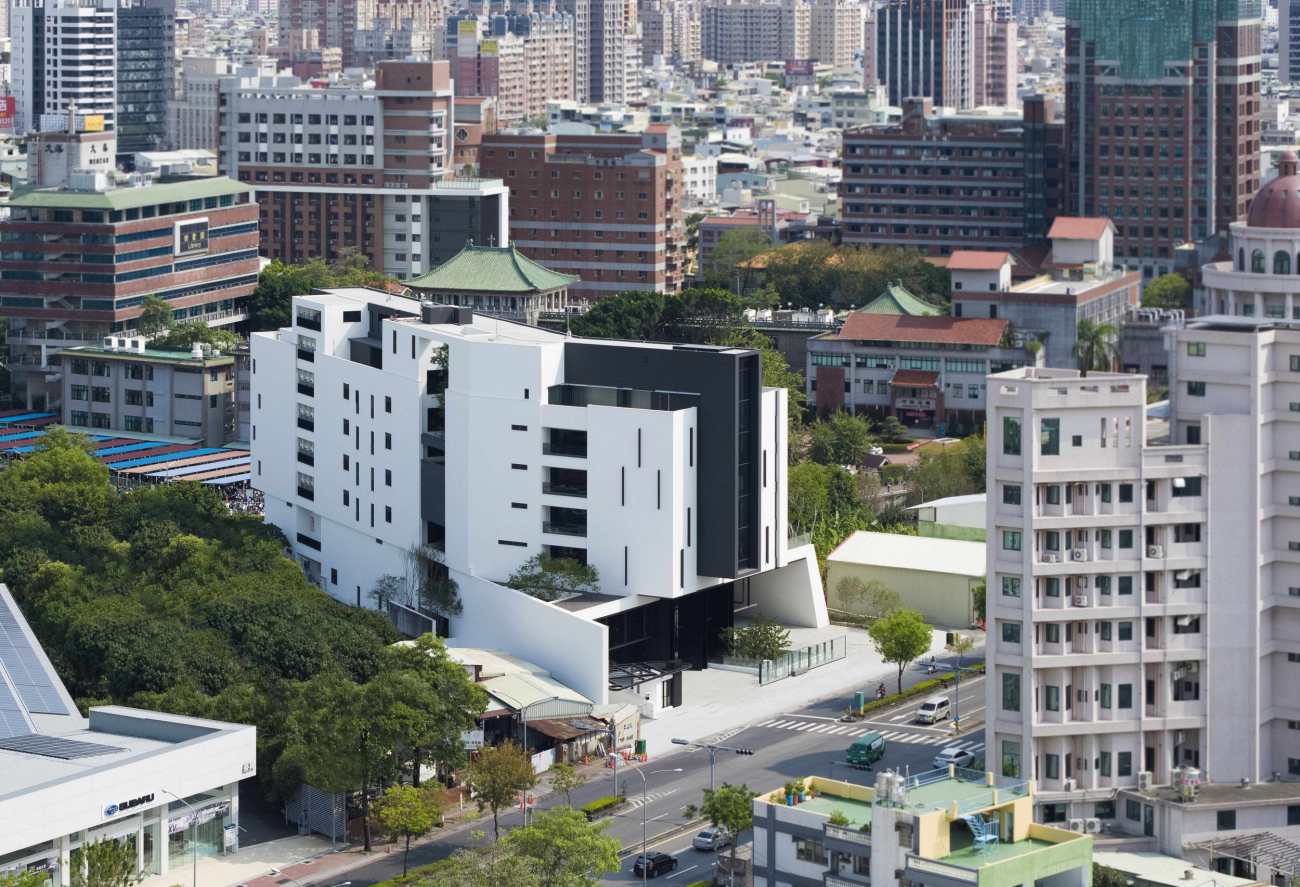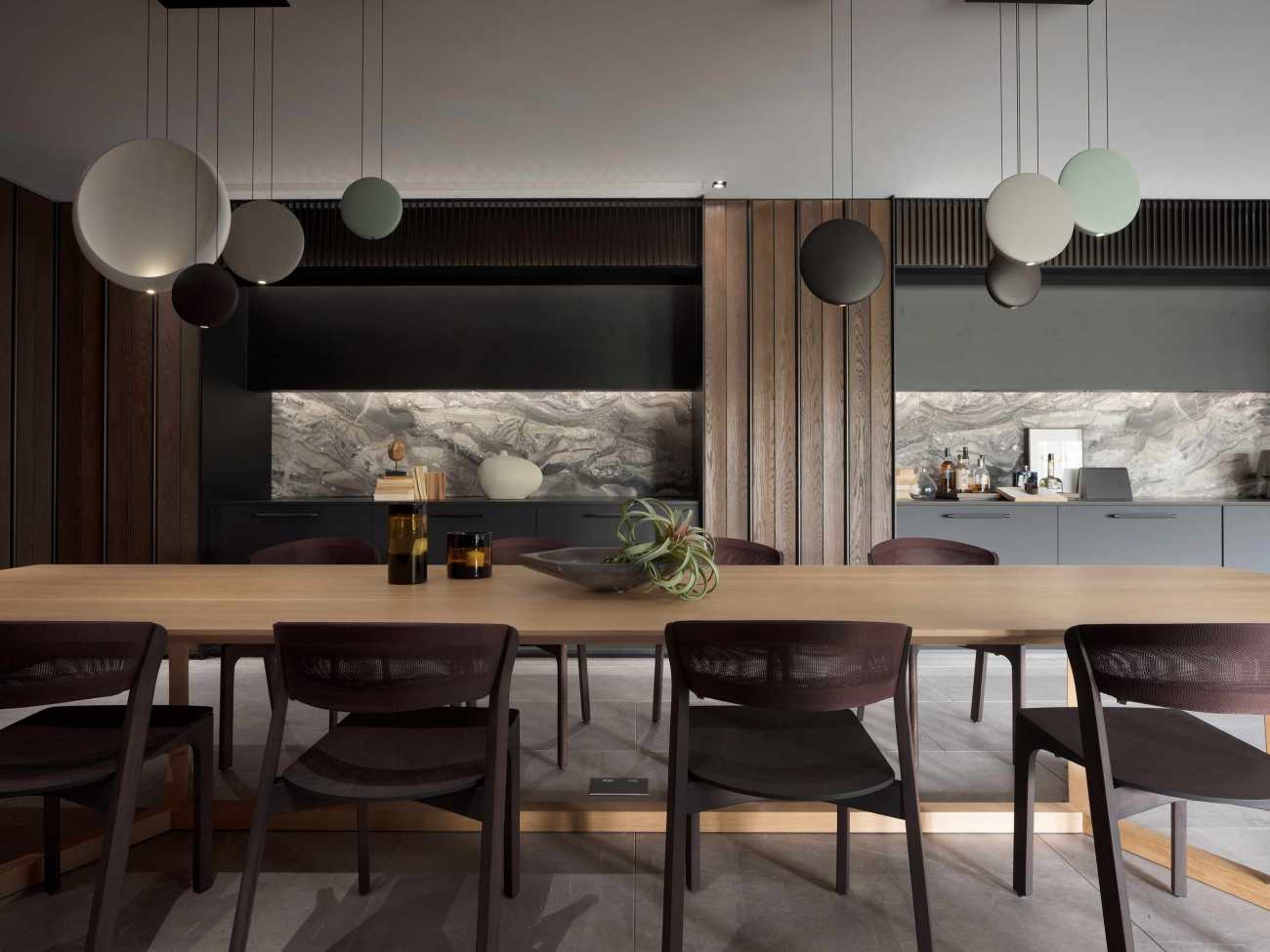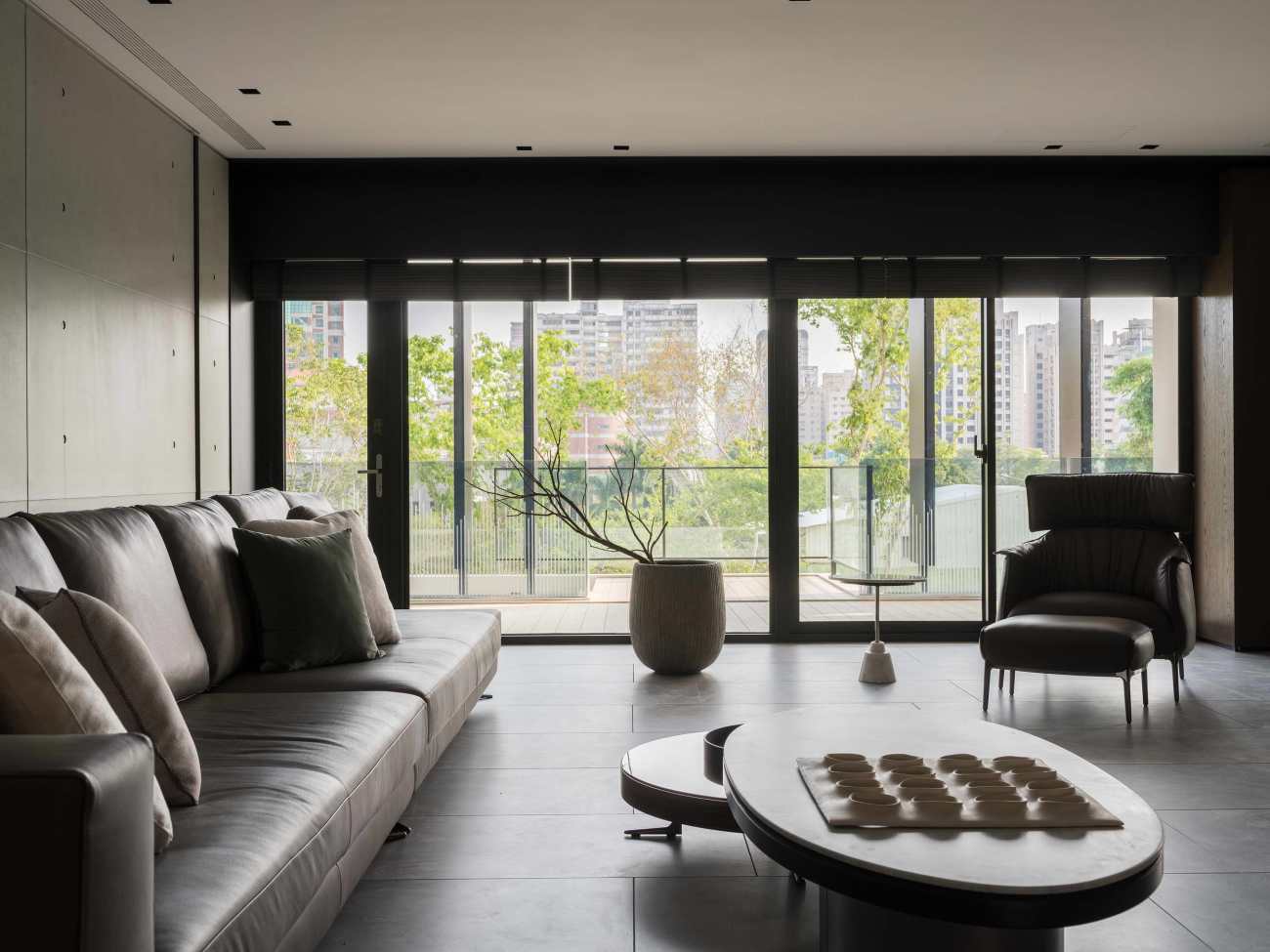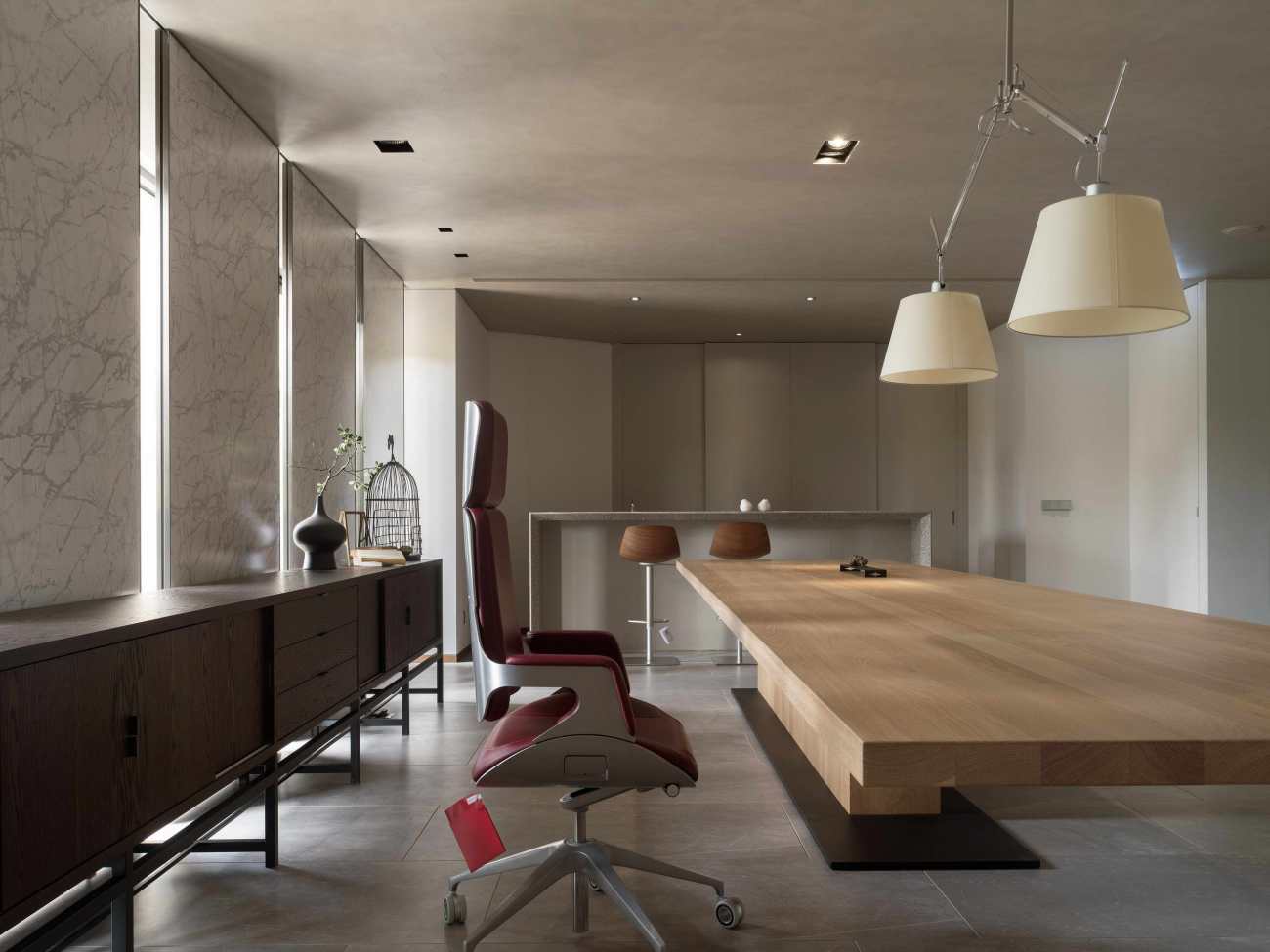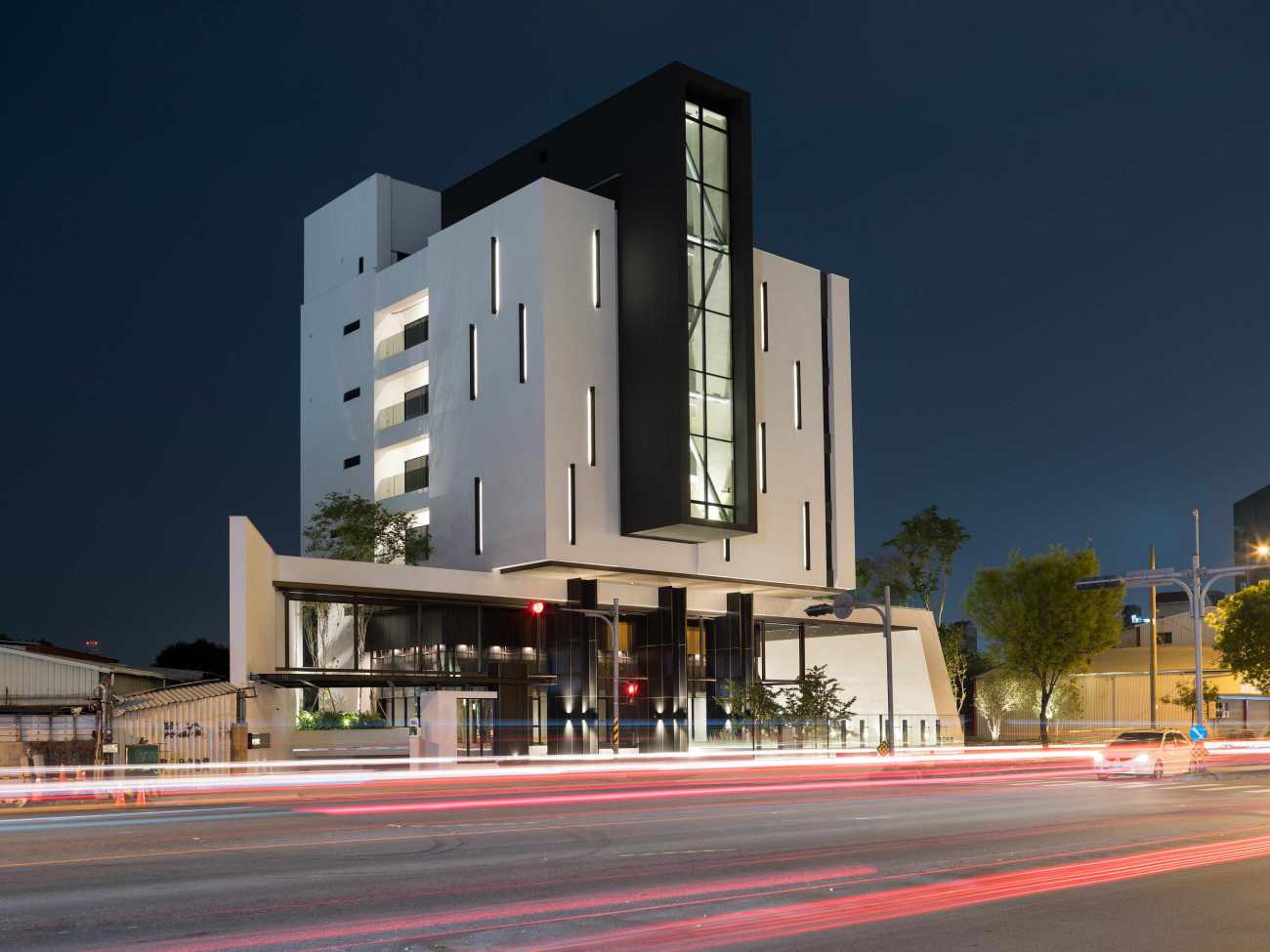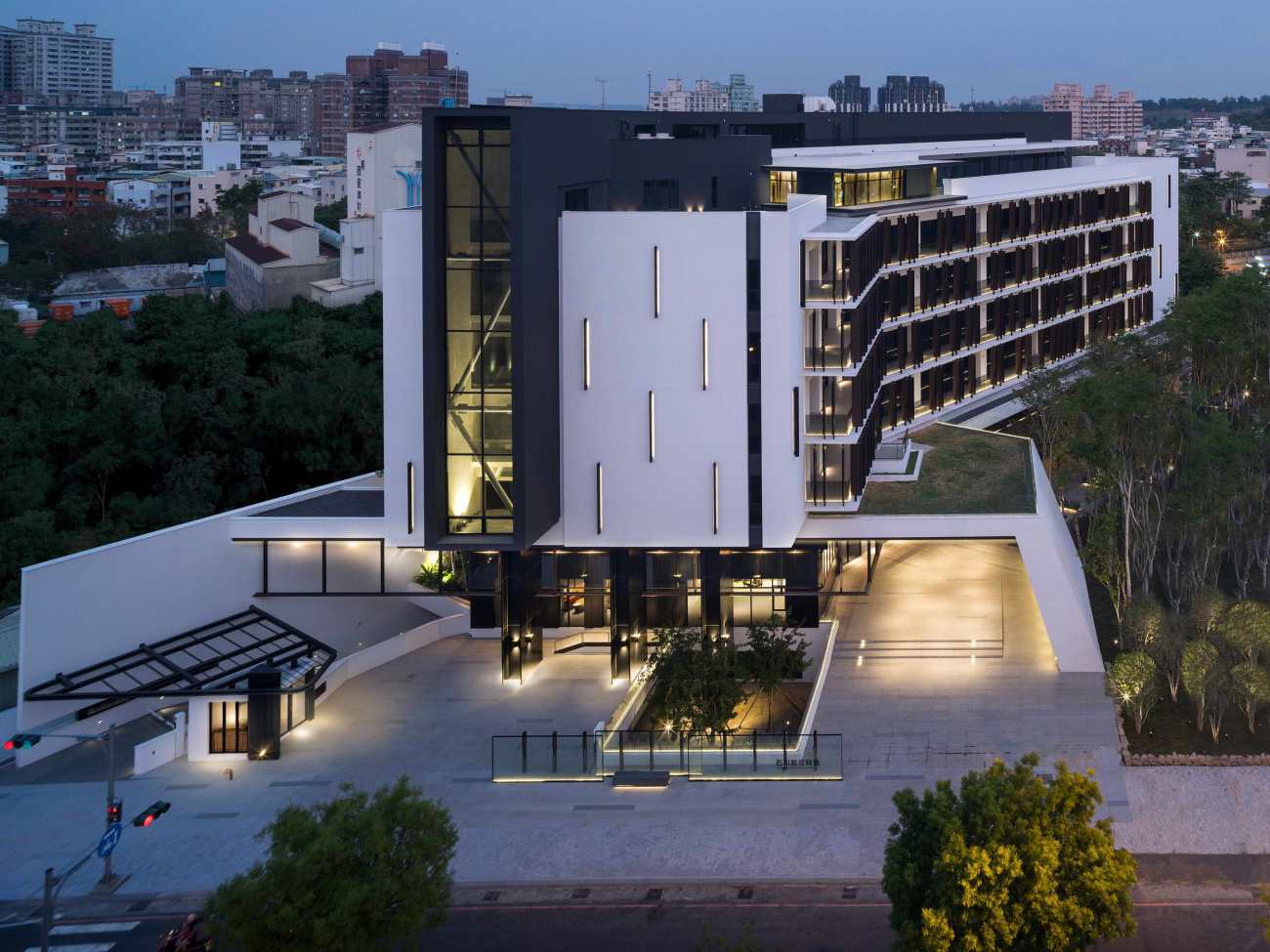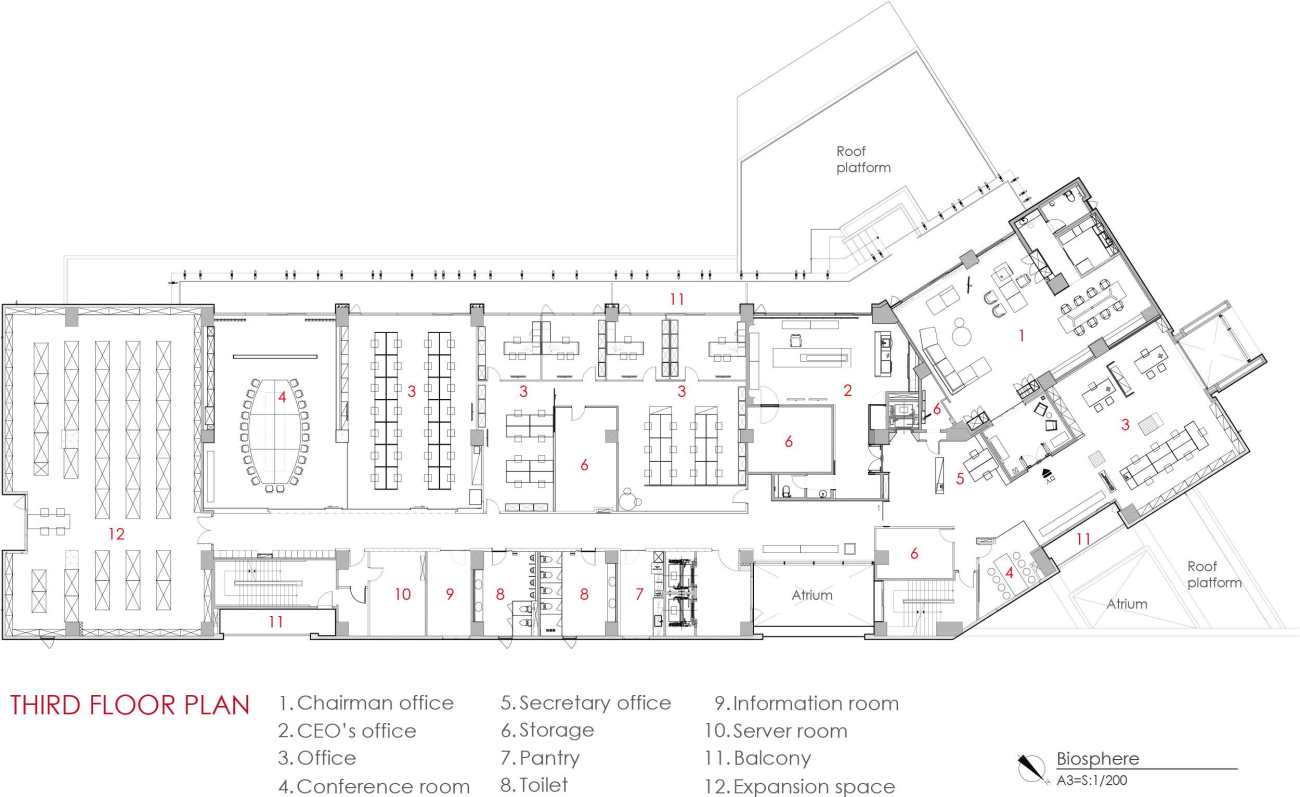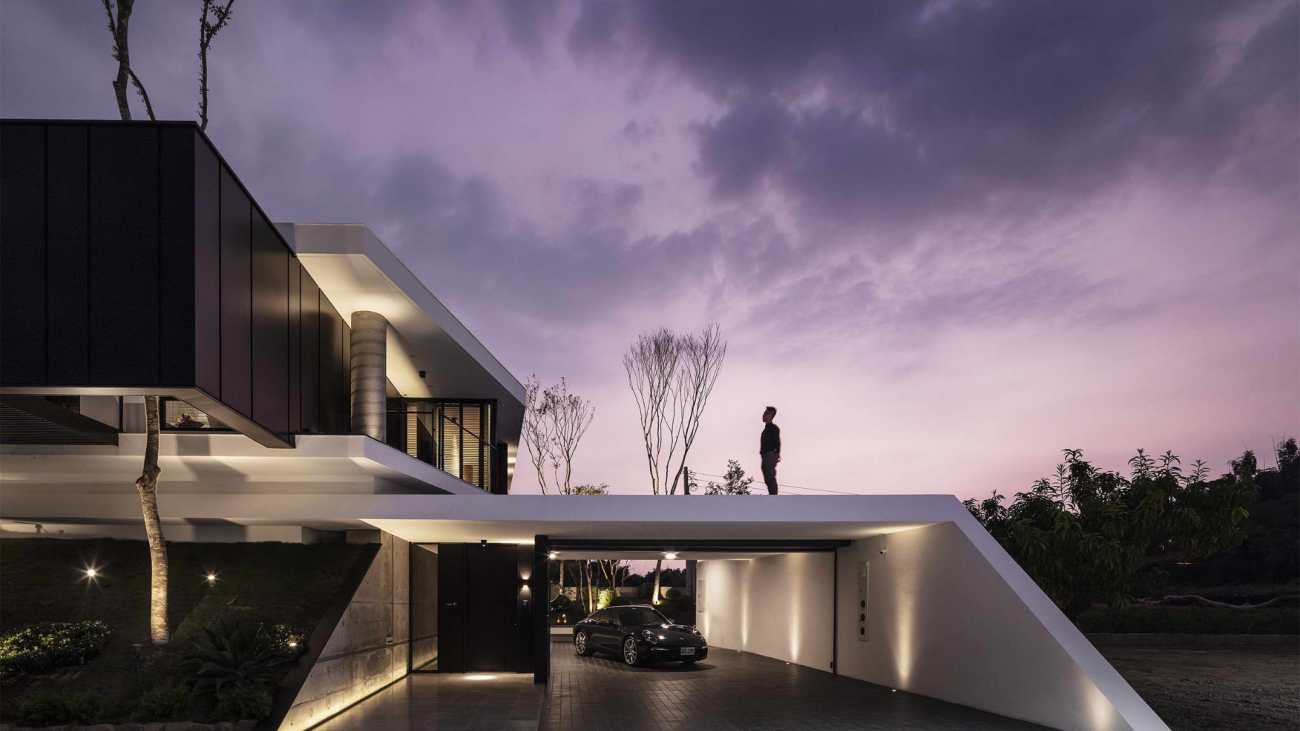世界变化的速度比我们任何人都要快,建筑师必须转型,否则就有可能和他们的设计一起被淘汰。这个项目延续了这一趋势,试图尽可能多地融入可持续发展和生态友好的原则。该项目位于台湾南部,靠近南北省道。狭窄的地块宽度不到30米,所以空间限制是必须考虑的问题。
The world is changing faster than any of us could expect, architects must transform or risk becoming obsolete along with their designs. This project continues the trend of trying to incorporate as many sustainable and eco-friendly principles as possible. The project is located in the south and close to the north-south provincial highway in Taiwan. The narrow plot is less than 30 meters wide so space constraints are something that had to be accounted for.
省道的噪音、空气污染,以及员工和客人过境办公的顾虑,都阻碍了该地块的发展。有更简单的解决方案来解决其中一些问题,但在2020年必须做出可持续的选择。建筑物背靠背叠加,希望围绕建筑入口的开放性形成一个焦点。该建筑还采用了大量的悬挂式构件、深阳台和遮阳板。这些构件都有助于降低建筑内部的温度。西侧的窗户面积被缩小,以减少空调的能耗。沿着正面的窗户的位置是这样的,当太阳从天空中移动时,可以看到一条光路穿过办公室。这有助于提醒办公室里的人们白天的时间流逝。
The site is hampered by noise from the provincial highway, air pollution, and concerns about employees and guests transiting to the office. There are easier solutions to address some of these problems but sustainable choices have to be made in 2020. The building was stacked back to the back, hoping to create a focal point around the openness of the building's entrance. The building also has a large number of suspended elements, deep balconies, and sun visors. All of these components help to decrease the temperature inside the building. The windowed area in the west was reduced in size to decrease the energy usage from air conditioning. The windows along the front side were positioned in such a way that as the sun moves through the sky, a path of light can be seen moving through the office. This helps remind people in an office about the passage of time during the day.
气候变化和全球变暖是一个越来越紧迫的问题,但人们集中在城市地区的趋势是不可避免的。这就意味着建筑师必须尽可能地将绿色引入城市空间。这样做的同时,还要考虑到大气条件以及本土植物的种类。树叶试图扭转密集的城市地区常见的 "热岛 "效应。建筑的外立面放弃了传统建筑的思维,将西侧的窗户全部取消。
Climate change and global warming are an increasingly urgent issue, but the trend of people concentrating in urban areas is unavoidable. That means that architects must try to bring greenery into urban spaces as much as possible. This was done while accounting for the atmospheric conditions as well as the native plant species. The foliage tries to reverse the “hot island” effect that is common in dense urban areas. The facade of the building abandons the thinking of traditional architecture by removing all windows from the western side.
 |  |
台湾处于亚热带环境。這意味著高湿度會影响建築物及其內部所有物件的维护。将传统的亚洲结构概念,改变为防水瓷砖,并将其涂抹在外部。这样一来,外墙的疏水性提高了2500倍,同时还能让氧气进出建筑。这也解决了项目外部涂抹不干净的水的问题,同时打造了一个会呼吸的活建筑。
Taiwan is in a subtropical environment. This means high humidity affects the maintenance of buildings and all the objects inside of it. The traditional concept of Asian structures was transformed by changing waterproof tiling into a waterproof coating and applying it to the exterior. This makes the exterior 2500x more hydrophobic while still allowing oxygen into and out of the building. This also solves the problem of unclean water coating the outside of a project while creating a living building that breathes.
建筑的色彩与环境中大量的绿化交织在一起,营造出协调、友好的入口形象。入口处的走廊被高度自然的坡堤和密植的树木所包围。外部点缀着石椅。在压力大的时候,办公室的员工可以到外面走走,感觉就像逛到了另一个生物群落。这是更多现代办公室所需要的重要组成部分,是帮助员工应对长时间工作压力的东西。
The color of the building and a large amount of greenery in the environment is intertwined with the greenery of the property to create a coordinated and friendly image of the entrance. The corridor of the entrance is surrounded by a high degree of natural sloping embankments and densely planted trees. The exterior is dotted with stone chairs. During times of high stress, the employees of the office can take a walk outside and feel like they have strolled into another biome. This is a critical component that more modern offices need, something to help employees deal with the stress of long working hours.
通过摒弃传统的亚洲建筑模式,创造了一个与环境共生的结构。可持续发展的同时,也是一个可以让很多代人工作的地方。
By abandoning the traditional Asian model of architecture, a structure was created that is symbiotically linked to the environment. Sustainable while being a place for many generations of people to work.
▽一层平面图 First floor plan
▽三层平面图 Third floor plan
▽四层平面图 Forth floor plan
▽七层平面图 Seventh floor plan
Project name: Biosphere
Location: Kaohsiung City, Taiwan
Architects/designers: Keng-Fu Lo
Firm’s name: Chain10 Architecture & Interior Design Institute
Photographer: KyleYu Photo Studio
更新日期:2020-12-18 15:08:14
非常感谢 橙田建筑丨室研所 带来的精彩项目, 查阅更多Appreciations towards Chain10 Architecture & Interior Design Institute for sharing wonderful work on hhlloo. Click to see more works!

